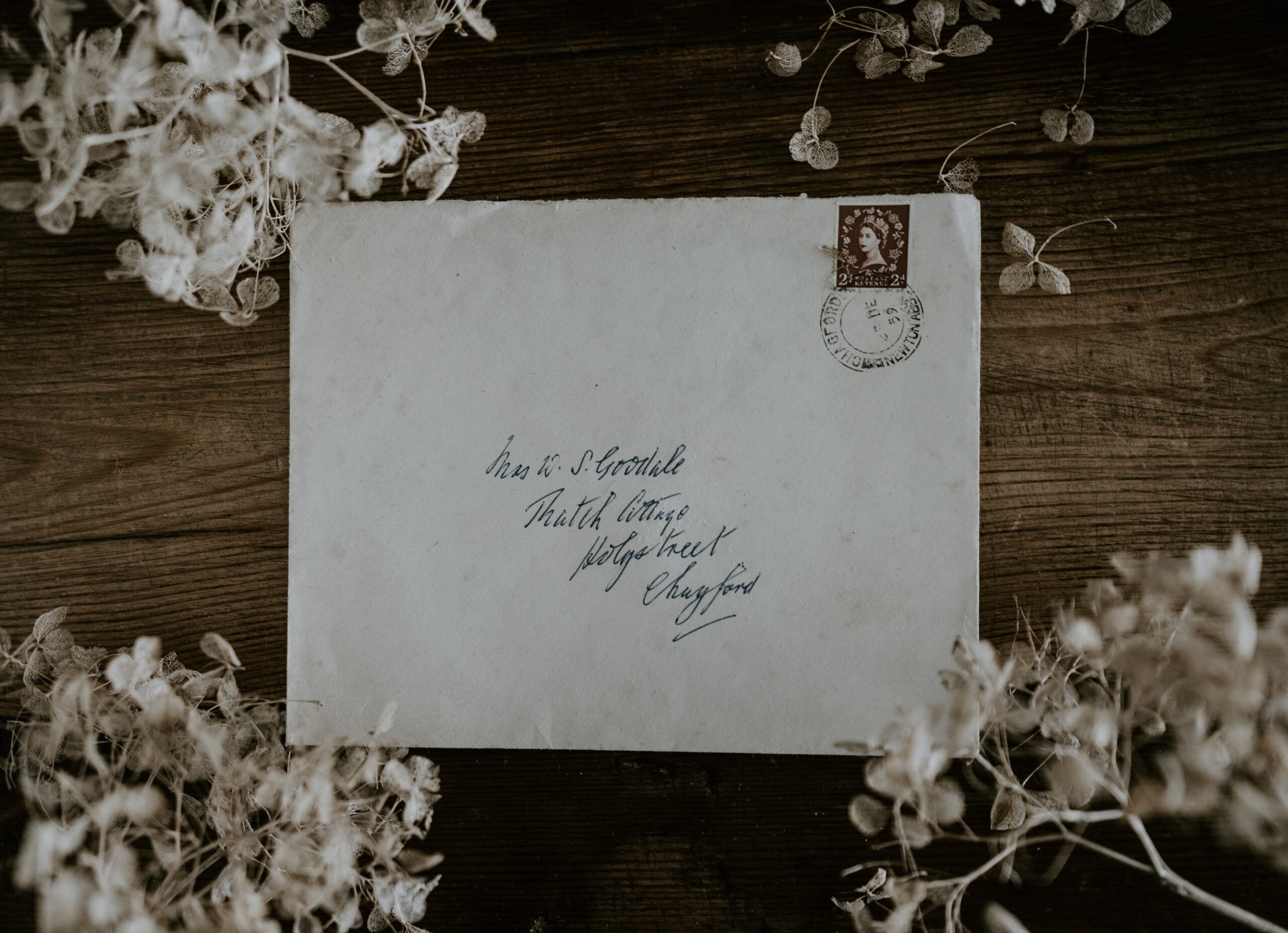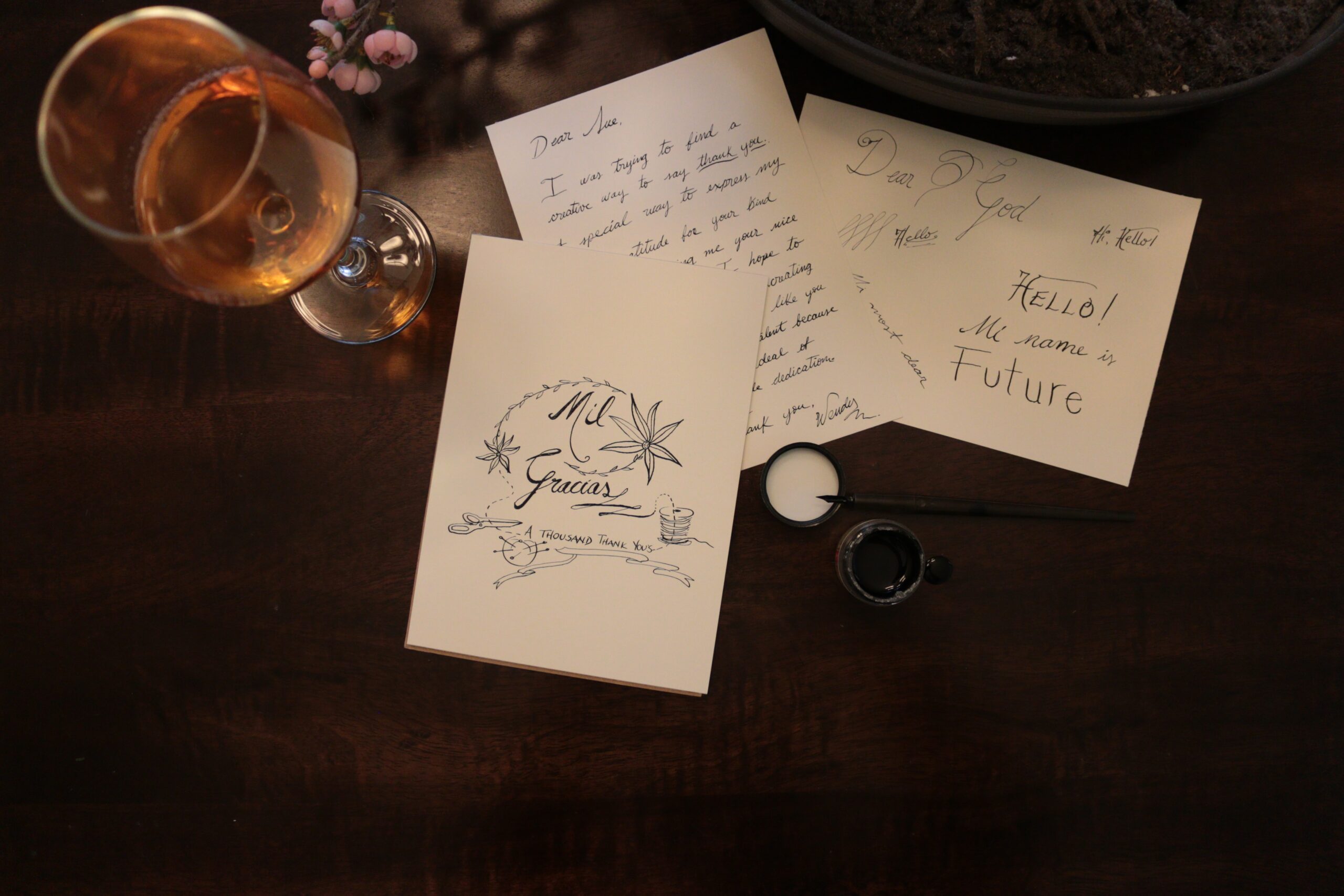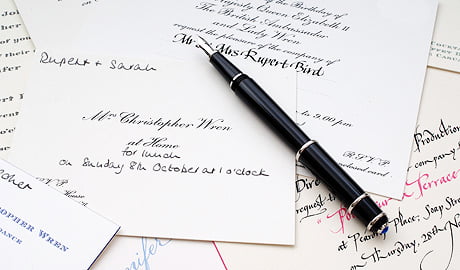
There are three kinds of invitations to private parties:
- formal
- at Home
- contemporary and informal
Traditionally, there were only two types of private invitation: ‘Request the pleasure…’ and ‘at Home’, and each would clearly delineate where the event would be held.
Today, ‘Request the pleasure…’ invitations tend to be reserved for very formal events. At homes are applicable for a number of events, including those that are held in another venue. (On the invitation the ‘a’ for ‘at’ is lower case and the ‘H’ for ‘home’ is upper case.) Contemporary and informal invitations can provide even more flexibility.
Alternative wording and layouts are acceptable but should be obviously distinct from traditional styles. This will ensure that any deviation is seen as intentional, rather than an error.

Where applicable, the exact rank in the peerage of the host and/or hostess is given on all types of invitation.
If there is more than one hostess, their names are placed one after the other. The first name corresponds to the address to which the replies are to be sent.
If the hostesses are to deal with replies separately, their addresses are placed from left to right at the foot of the card, in the same order as their names.
Where the hostess considers it necessary to indicate the dress expected to be worn, it should be printed bottom right, eg ‘White Tie’ for evening dress, ‘Black Tie’ for dinner jacket.
When necessary, many hostesses will try to indicate more specifically the level of dress expected, either verbally, in an email, or in a letter or information sheet if one is being sent
with the invitation.
The word ‘Decorations’ positioned underneath the dress code on a private invitation implies that a member of the Royal Family is expected to be present.
If no alternative location is given, it is understood that the event is to be held at the address to which a reply is requested. If the event is taking place in the country, it is useful for a map to be placed on the back of the card or on a separate sheet.
‘Please bring this invitation with you’ may be added at the foot of the card. Traditionally this indicated that a member of the Royal Family would be present, but is now used for general security reasons when required.
It is wise to send invitations as early as possible. While a quiet, intimate dinner among close friends may be arranged over the telephone at short notice, it is advisable to give advance warning for a more formal gathering with a larger number of guests.
Guests’ names are written in the top left corner, except for formal invitations designed for them to be written on a line in the middle of the card.
The following should be noted:
No prefixes, such as ‘The Rt Hon’ or ‘The Hon’, are employed and no letters after the name are included.
The word ‘The’ is usually omitted for the ranks of marquess and earl, and is always omitted for viscount and baron, as well as for their wives. All peers and peeresses, apart from dukes and duchesses who are referred to by these titles, are given the form ‘Lord and Lady Hill’. This is the established custom for all but the most important private events, when the exact rank in the peerage may be given.
Grown-up sons and daughters are usually sent separate invitations even when they live at home. However, when their exact names, or addresses, are not known, it is permissible to add ‘and Family’, or their forenames, after their parents’ names.
The words ‘and Guest’ or ‘and Partner’ may be added.
During Ascot week and other occasions for which house parties are given, invitations may show the words ‘and House Party’ after the names of the guests.
Traditionally, invitations to a married couple, when sent to their home address, are addressed to the wife alone, with both names being inscribed on the invitation card. It has become increasingly acceptable, however, to address the envelope with both names.
For a guide to forms of address, including titles and letters after the name, click here
Replies are sent on headed writing paper, as for official events, written by hand in the third person. They are traditionally addressed to the hostess even when the invitation is a joint one from both the host and hostess.
When invitations are extended to unnamed guests such as ‘and Partner’ or ‘and Family’, the reply should include the names of those attending. A named invitee should be substituted with another guest only if the hostess gives her express permission.
If an invitation is accepted, it is bad form to withdraw that acceptance unless there is a genuine reason (eg illness); another, more appealing, engagement is not an excuse for withdrawing an acceptance. This rule may be further complicated by the public nature of invitations issued via social media. Always bear in mind the importance of the event to others and act accordingly.
If an invitation is extended and accepted verbally, for example by telephone, the hostess should send an invitation card on which ‘RSVP’ has been deleted and ‘To remind’ or ‘Pour mémoire’ substituted. In this case there is no need for acknowledgement.
These are engraved on card of good texture, usually about W6 x H4½ inches (15 x 11 cm) in size, or slightly larger. They are prepared in the name of both the host and hostess. If time is short they may be printed, rather than engraved.
The most traditional and formal style is ‘Request(s) the pleasure of the company of…’. Depending on the style of the invitation, the guests’ names may be handwritten on the next line. Alternatively, guests’ names are handwritten in the top left-hand corner. In this instance, the invitation would read ‘Request the pleasure of your company’.
If the event is to take place at an address other than that to which the replies are to be sent – at a hotel, for example – this is stated on a line after the date.
The time may be placed either after the date or at the bottom right-hand corner before, or in place of, the dress code.

There are two types of at homes:
- ‘closed’ at homes for a specific event
-‘open’ at homes, with the name of the hostess, ‘at Home’, RSVP and the address. The date is left open so that the invitations may be used for more than one event.
‘Closed’ at home invitations for a specific and usually formal event are traditionally engraved on a card of good texture about
W6 x H4½ inches (15 x 11 cm) in size, or slightly smaller. In the case of married couples, these are traditionally prepared in the name of the hostess only.
If the time of the event is not a sufficient indication as to its nature, the latter may be stated on the bottom-right: for example, ‘Dancing 10 o’clock’. If the invitation extends from 6 to 8.30 pm the description ‘cocktails’, ‘drinks’ etc is unnecessary, though it is often included. Guests’ names are handwritten in the top left.
‘Closed’ at home invitations may be sent out by the hostess on behalf of someone else; for example: at Home for Theo’s 21st.
With the exception of dances, ‘open’ at home cards may be used for parties. These are smaller in size than ‘closed’ at homes, usually W5½ x H3½ inches (14 x 9 cm). The card is printed with
Traditional invitations do not always fit comfortably with contemporary parties, especially those with a theme. With careful consideration and clarity of detail, contemporary invitations may convey to guests the unique look and feel of a party, as well as having the flexibility to include plenty of information. The level of formality of the invitation should accord with that of the occasion.
It is up to the hosts to choose an invitation style that is appropriate for informal events. Whatever option is chosen, be it a printed invitation, letter, telephone call or email, all the relevant details and arrangements – including the nature of the occasion, timings and dress – must be clearly and successfully conveyed
While an email or simple message in a Christmas card may be a practical method of warning guests about an event, a dedicated save-the-date card arriving by post is likely to have more impact.
Save-the-date cards are practical, as invitations that are sent more than two months in advance – and require a reply – can be restrictive for both sides. Invitations were traditionally sent out a maximum of six weeks before the event, which would ensure that most people were not already booked up, but increasingly, although still correct, this is not sufficient. They may now be sent out up to six months in advance, while key guests can be invited informally as soon as the date is set.
Traditionally, save-the-date cards were slightly smaller than a postcard, and utilitarian in design. Today, they may be more elaborate. The wording should be kept brief and include basic information about the event. Guests’ names are not written on the card; it is neither necessary nor correct for guests to reply.